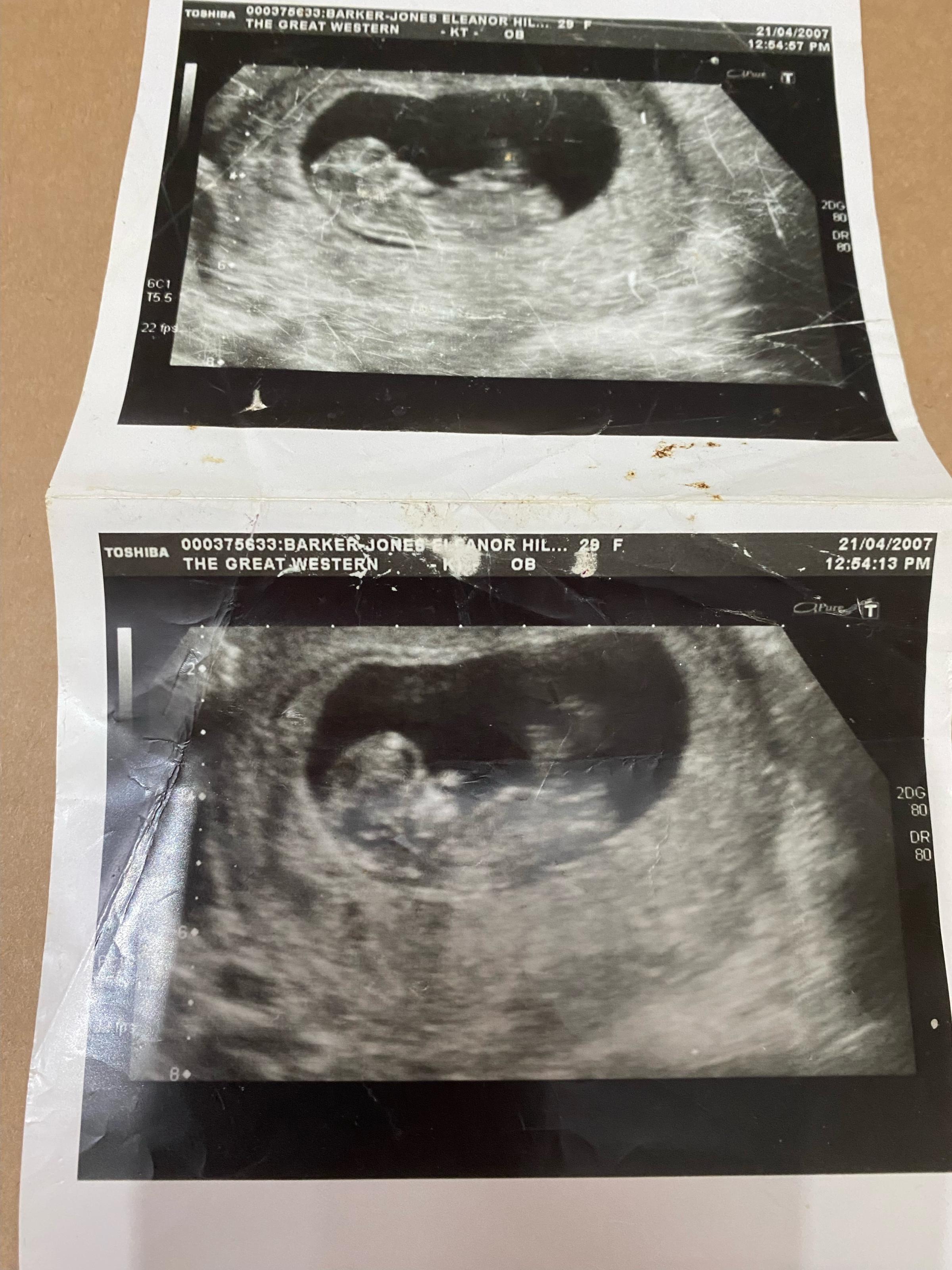
“It’s vanished,” the sonographer said. He had checked the ultrasound several times and was certain of his assessment.
My husband and I craned forward to examine the ghostly shadows on the screen, the black hollows, like eyes, surrounded by swathes of gray. It felt like we were watching a film noir. The jelly felt cold on my stomach. “What do you mean, vanished?”
Last time I had lain in this room, at my eight-week scan, there had been two bean-shaped babies on the scan, two heartbeats inside me, pulsing with life. I had undergone a grueling course of hormone injections as part of our IVF cycle, and after an anxious wait, we were shocked and thrilled to be told not only had it been successful, but we were expecting twins.
We’d gone home and celebrated. Twins! We talked endlessly about the practicalities and dynamics: could we afford two? Could we manage two? How would breastfeeding work? Did we have room? It didn’t matter; we’d be fine, we would manage. In maternity stores, I marveled at the softness of baby suits, imagining my babies inside them, their tiny faces smiling up at me, side by side. My husband and I tested out double strollers, laughing as we crashed into store displays, vowing that we wouldn’t be as incompetent when our twins arrived. Perhaps somewhat naively, we developed a romantic vision of the challenges that lay ahead.

Read More: Why There's So Much Pregnancy Trauma on TV and Podcasts Right Now
How was it possible that five weeks later one of my children had disappeared? I’d had no bleeding, no cramping, no symptoms to suggest anything had failed.
“It’s called vanishing twin syndrome,” the sonographer said. “One twin becomes absorbed by the other.”
Vanishing twin syndrome. It sounds like a magic trick, a sleight of hand. In many ways, it is: here, you have two babies, two beating hearts, thrumming away with life, and the next time you look, one is missing. Vanished. Not a trace remains.
More From TIME
I was desperate for information, but while I knew what had happened–one twin had been lost in a miscarriage, and the other had absorbed the fetal tissue–nobody could tell me why. There was no advice leaflet or support group for VTS, and internet articles were clinical, sparse on detail. Medical professionals dismissed the syndrome as “one of those things.” There is nothing that can be done to prevent or treat the condition. Whispers between similar grief-stricken, guilt-ridden parents on parenting and fertility forums showed that it was a relatively common phenomenon, yet the syndrome was still shrouded in mystery. From the little information I could find online, I learned that between 15% and 35% of twin pregnancies are reduced to a single fetus due to VTS, with the lost twin usually reabsorbed.
A friend who had suffered a miscarriage said I was “lucky,” and I didn’t know how to respond because she was right–I still had one. But this only compounded my conflicting emotions of shame and fear. Although outcomes for the surviving twin are generally good, particularly if the loss of the vanishing twin occurs in the first trimester, little research has been done involving the mental-health effects of VTS on the birth parents or the surviving sibling. I became obsessed with prodding my stomach to check the movements of the remaining twin, terrified of suffering complications or another loss. At the same time, I felt guilty for “failing” the lost twin. I needed to grieve, but as the weeks went by, obstetricians treated me as though I’d only ever borne one child; the missing twin was never mentioned again.
“Our little Pac-Man baby,” my husband said one evening, when I was looking at my growing bump in the mirror. It was supposed to be a joke–a reference to the surviving twin having “eaten” the other–but instead of laughing, I cried. He apologized. We sat on the bedroom floor and held each other as our surviving child pummeled me from inside. It felt like joy, wrapped up in terrible sadness. As the pregnancy progressed, I still worried that I had done something wrong, because when you’re expecting, everything is expected of you. Rest, but not too much. Eat, but not for two. Keep your house clean. Keep your child alive. No wonder VTS was such a closely guarded secret.
When my son was born, I was elated. Yet it still seemed bizarre and implausible that the other twin had vanished entirely. I continued to wonder: what if both had survived? How different would our family dynamic be? What if the other twin had survived instead? And as my son grew older, I noticed quirks that didn’t come from me or my husband: the way he walked, always on the balls of his feet, how he considered the world with a maturity and stoicism seemingly beyond his years. I wondered if a part of his twin was still there, helping him through.
This concept may not be as unlikely as it seems. In 2014, it was discovered that a man undergoing fertility treatment was carrying DNA from his vanished twin. The cells had been absorbed into the surviving twin, effectively creating a blend of himself and his brother – a chimera. With scant research into the impact of VTS on surviving twins, it’s not clear whether this phenomenon has other effects on identity. What is clear is this: Out of sight doesn’t mean out of mind. In a sense, the lost twin never really vanishes; it is left behind in the remaining sibling, the hearts of the birth parents, the deep, dark pockets of things unknown.
More Must-Reads from TIME
- Why Trump’s Message Worked on Latino Men
- What Trump’s Win Could Mean for Housing
- The 100 Must-Read Books of 2024
- Sleep Doctors Share the 1 Tip That’s Changed Their Lives
- Column: Let’s Bring Back Romance
- What It’s Like to Have Long COVID As a Kid
- FX’s Say Nothing Is the Must-Watch Political Thriller of 2024
- Merle Bombardieri Is Helping People Make the Baby Decision
Contact us at letters@time.com